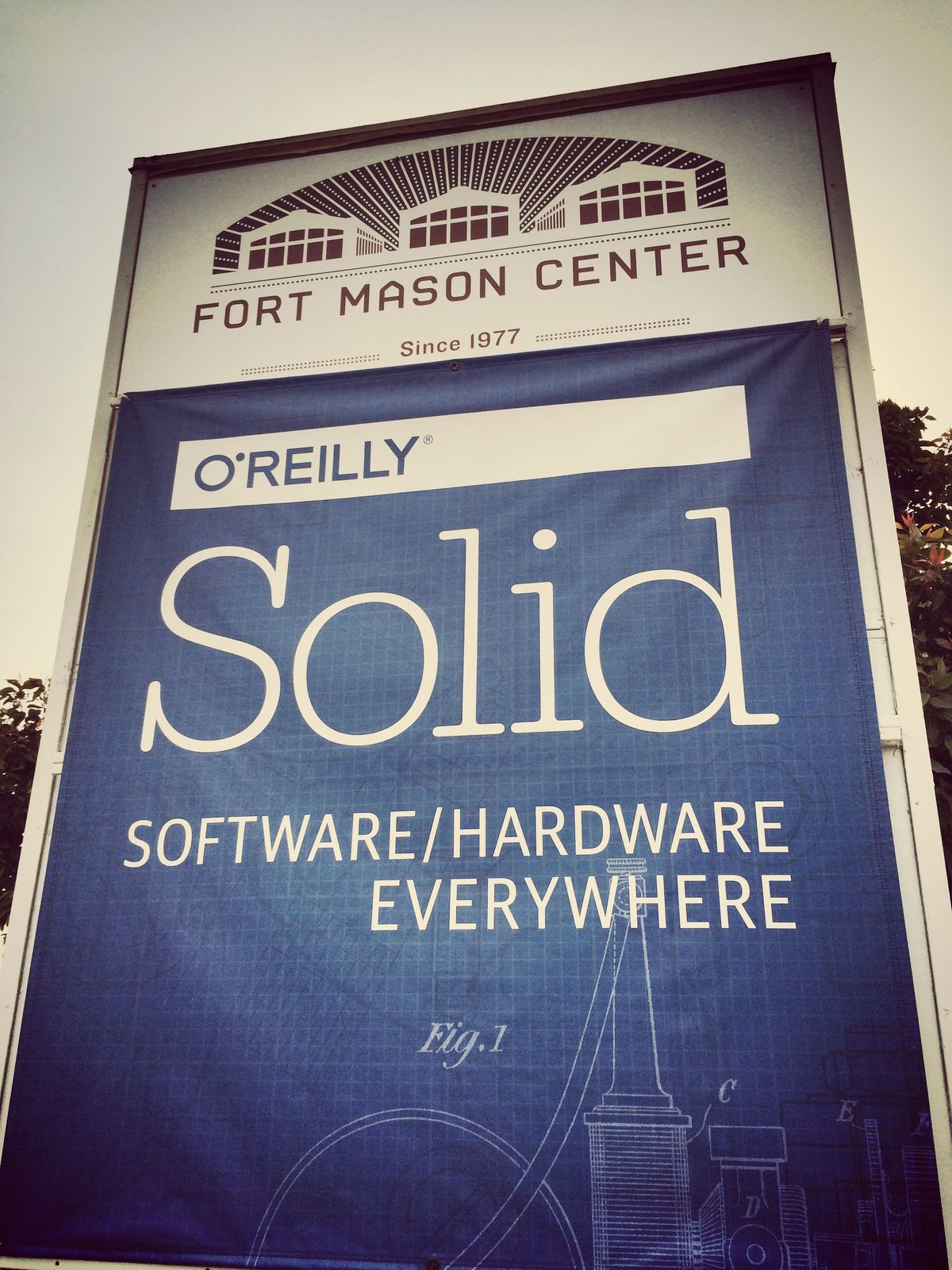The Future of Hardware, Software, and The Physical World - Takeaways from O'Reilly Solid 2014
My observations and takeaways from attending the O'Reilly Solid Conference in 2014.

Last week, I attended the O’Reilly Solid Conference, focusing on solid – the intersection of hardware + software + physical things. While hardware and software have existed for decades and are mature in their own rights, it is often the intersection of disparate things that creates innovation through collisions of innovation. And so over 1,400 curious people gathered together to collide.
I wasn’t sure what to expect from the conference. I am passionate about hardware + software and the new possibilities for interactions and solutions that it enables. And while wasn’t exactly what I thought it would be, it surprised, delighted, and taught me, leaving me hopeful and inspired for the future of solid.
While I’ll share some focused takeaways and observations in the remainder of this post, perhaps the thing that made the biggest impression on me was the diversity of the attendees and speakers. From professors to mechanical engineers to startup founders to artists to hackers to industrial designers to the just interested, solid is well poised to collide ideas to enable new and unexpected outcomes. It will be interesting to see the collisions it creates in the future, as well as who composes the community in the coming years.

After attending a diverse set of sessions and chatting with many attendees, the following takeaways standout for me:
- Don’t make a better solution for an unnecessary process. Focus on the user’s desired outcome and make a solution for that. Hardware + software enables new solutions that were hard or impossible previously. Think about how things should work, not how they do work. This may mean remaking or even eliminating a process. Disruptive change.
- Hardware should know us. And it shouldn’t require a separate identity for each device. It should know our preferences and learn about us, no matter where we are. We need single sign-on for the physical world. We should be able to interact with the whole world, not just a lightbulb in our living room. The entire world should be a continuous interaction.
- Making is still too hard, but lots of people and companies are working hard to make it easier. There is a huge complexity difference between 3D printing and CNC. Additional complexity is free in 3D printing while it’s not in CNC due to extra fixturing, rotation, etc. Also, new making machines and materials are enabling new solutions like combo CAD / CAM / CNC / Laser / 3D printing all in one.
- Most remaining problems in the world are physical and require a physical solution, be that hardware + software / etc, to solve them. Software can partially solve it, but can’t bring a full solution to bear alone.
- We have tons of gadgets that don’t interact with each other. They need to be able to interact. Users want outcomes not brand specific ecosystems and proprietary closed solutions.
- Prototypes spark conversations. Building hardware prototypes fast, failing fast, and failing often = more time to iterate and make it great. Sometimes the prototype is just a conversation starter – a way to get other people to share their perspectives, even if they drastically change your initial direction. Also, firmware can be used to dramatically iterate a physical product.
- You are the button. Hardware enables new methods of interaction. Maybe it’s where you are. Maybe it’s where you aren’t. Maybe it’s where you’re pointing. Maybe it’s who you’re with. Maybe it’s tapping one device to another. Maybe it’s flicking content from one device to another. Reimagine. Be playful. Some things will stick, and the rest will be fun.
- Hardware can be soft. Just because something is physical doesn’t mean it must be rigid and frozen. Fabrics and flexible materials enable soft hardware, much like humans and animals with skin, mussels, and bone. And often these are simpler to implement.
- We’ve come so far, but we are only at the beginning… Some of these things may take years or decades to mature, but the attendees of Soid are leading the way.
- Some promising tools and services:
- Temboo: A service for orchestrating the Internet of Things, offering integrations with 100s of APIs and 1000s of API Calls. Helps to limit the resources needed on limited resource embedded devices.
- Mellow: A home sous vide machine for cooking food, designed more like the Nest in terms of thinking about real use cases you care about. Examples: It keeps food cold and starts it later in the day so it’s ready when you arrive home. It asks you how you liked your meal and learn about you to better suit your needs in the future. I love things that speak, and Mellow is a great example.
- Node Red: A visual editor for Node.js to orchestrate interactions between the Internet of Things.
- MQTT: A broker for publishing and subscribing to data using a lightweight protocol, limiting the resources needed on limited resource embedded devices.
- noam.io: A service for rapid hardware prototyping through easy data storage.
-Adam



Comments ()